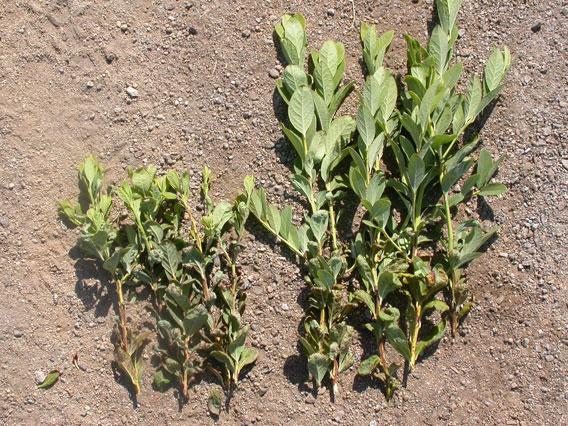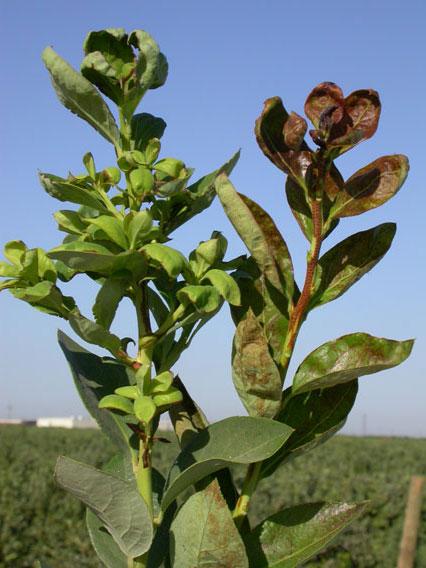Development of an IPM Program for Citrus Thrips in Blueberries
COLLABORATORS: Joseph Morse, UC Riverside; and Manuel Jiminez, UCCE Tulare Co.
The development of heat-tolerant varieties of blueberries has allowed for the establishment of a California blueberry industry. However, the planting of blueberries near citrus (which previously was never done) has led to a new problem, citrus thrips. Citrus thrips feed on the new flush growth of blueberry plants. This causes stunting which is thought to decrease the quality of fruiting wood, and likely yield and quality of fruit. To combat this pest, growers spray pesticides on a seven- to ten-day cycle for a period of about four months. This project was proposed to fix the problem by learning about pest biology and how it impacts the crop, while at the same time evaluating different monitoring programs and control options.
During the first year of this project (2006) we were able to identify May through early October as the period when citrus thrips are present in the blueberry canopy, and that thrips densities peak in July and August. Sampling sizes of 10 beat samples have been established as a reliable method for monitoring. We have data on the relative susceptibilities of major blueberry varieties to thrips damage, data on the effectiveness of 14 insecticides, and data justifying further work on high pressure water as an alternative to pesticides. Data supporting these conclusions can be found in the year one progress to the UC IPM program linked below.
Websites
Citrus Thrips in Blueberries Documents
- 2016 Impact of Citrus Thrips (Thysanoptera: Thripidae) on the Growth and Productivity of Southern Highbush Blueberries in California
- 2014 Arthropod Management Tests Citrus Thrips in Blueberries
- 2014 Citrus thrips, white grubs and SWD in Blueberries in lower San Joaquin Valley
- 2010 AMT Citrus thrips control in southern highbush blueberries in lower San Joaquin Valley
- 2008 Citrus Thrips in Blueberries
- 2008 Development of an IPM Program for Citrus Thrips in Blueberries
- 2007 Report to UCIPM for Citrus Thrips in Blueberries
- 2007 Citrus thrips control in conventional southern high-bush blueberries in California
- 2007 Citrus thrips control in organic southern high-bush blueberries in California
- 2006 Citrus thrips control in southern high-bush blueberries in California
- 2006 Evaluation of Insecticides for Citrus Thrips Control, Using Blueberries as a Crop Surrogate


